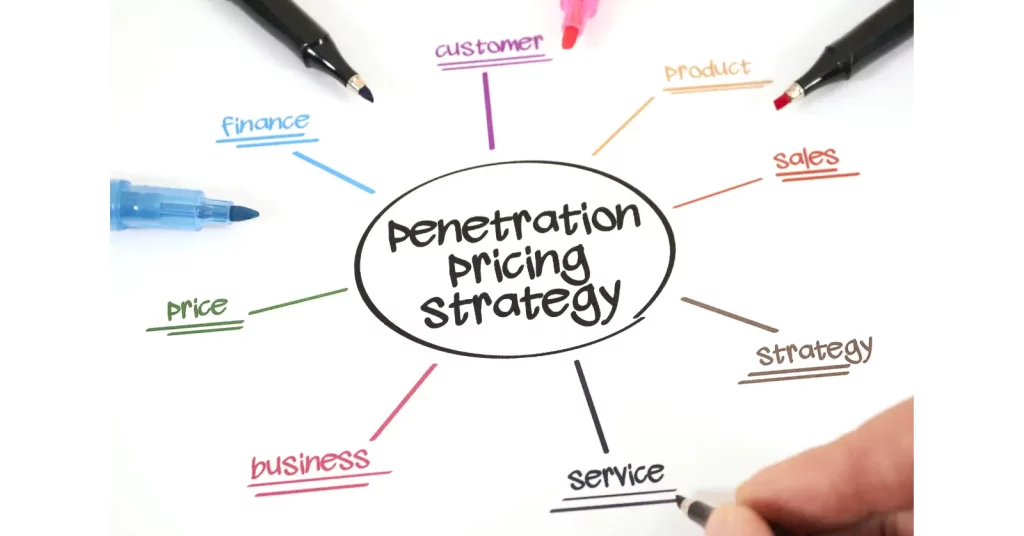
Go-To-The-Market Plan Checklist
A go-to-the-market plan checklist aims to help in growing your business. When a company launches a new product or service, it always uses a GTM(Go-To-Market) strategy to ensure success.
Are you going to launch a new product or service into the market to grow? A go-to-the-market plan checklist aims to help in growing your business. When a company launches a new product or service, it always uses a GTM(Go-To-Market) strategy to ensure success.
In addition, if you can create an effective go-to-market strategy, you can grow your new business acceleratedly. Here will discuss the data-driven GTM.
Firstly, we will give you insight into your go-to-market strategy, the components for a successful strategy, and the best ways for a go-to-market plan checklist.
What Is The Go-To-Market Strategy?
A GTM strategy is an effective plan that guides the best product launch. This strategy includes all the resources, activities and planning to make a successful market entry. A Go-To-The-Market plan checklist strategy considers weaknesses, strengths, and market trends.
GTM strategy is the first process to develop a project. It would help if you considered these things when building your GTM, including:
- The size of the market
- The market trends and competitions.
- Weakness and Strengths of the company.
- Customer needs and preferences.
- Getting the right product to market
These are the steps you should consider firstly for the success of the project.
Next, here is a detailed guide to help you grow your business.
4 Components of a Successful GTM Strategy
To ensure a successful product launch, the Go-To-The-Market plan checklist strategy should encompass the following elements:
1. Product Market Fit

Product-market fit is in which your product is embraced by the particular market you aim to serve, ensuring that it meets the specific needs of that market and is relevant.
2. Target Your Audience

The target audience refers to a particular group of individuals who are highly likely to purchase your product or service. You can identify them by their age, gender, or what they like to do. Knowing your target audience helps you advertise and communicate with them better.
3. Competition And Demand

To sell a new product, you should know what your competitors are selling and what people want. This is important because it helps you determine where your product fits in the market.
It also helps you understand if people want to buy it and what other companies might think about it. This information is very helpful when you’re trying to sell your product.
4. Allocation

Allocation is how you get your product or service to the people who want to buy it when you start selling it. If you have a product, will you sell it in a store or website? If you have a service, how will you sell it online? It affects the cost and demand. Pick your distribution channels carefully.
10 Best Ways To Plan Your Go-To-Market Checklist:
Expanding your business also brings risks to the success of the business. By taking these steps, you can surely grow your business safely.
1. Define Your Target Audience
You need to identify a specific group of people to define your target audience, who will most likely be interested in your product or service. You can do this by looking at demographic information like age, gender, location, and income level. Further, you should also consider psychographic information like interests, hobbies, and behavior patterns.
Comprehending your target audience is essential in developing an effective go-to-the-market plan checklist strategy, as it allows you to tailor your messaging and marketing tactics to resonate with this group.
2. Identify Your Unique Selling Proposition (USP)
Your product or service’s unique selling proposition (USP) distinguishes it from the competition. To identify your USP, consider the benefits your product or service offers no one else.
This could be a unique feature, a better user experience, a lower price, or a combination of these things. Your USP should be meaningful to your target audience and differentiate you from competitors.
3. Analyze Your Competition
To analyze your competition, and research other companies offering similar products or services. Look at their pricing, marketing strategies, customer reviews, and social media presence. This will give you a better understanding of differentiating yourself from the competition and identify areas where you can improve.
4. Determine Your Pricing Strategy

Your pricing strategy should consider factors like production costs, market demand, and competition. Decide whether you will price your product higher than competitors. In order to create a perception of quality or price it lower to appeal to price-sensitive customers. Addiotionaly, It would help if you also considered whether you would offer discounts or promotions to generate interest in your product.
5. Plan Your Distribution Strategy
Your distribution strategy determines how you will get your product or service to your target audience. This could include direct sales through your website, partnering with retailers, or using online marketplaces like Amazon. Think about the pros and cons of each option, and consider how each will impact your costs and revenue.
6. Create Your Marketing Plan

Your marketing plan should include a strategy for promoting your product or service to your target audience. This could include social media marketing, email campaigns, paid advertising, or content marketing. Identify the tactics that are most likely to resonate with your target audience and create a plan to execute them.
7. Set Your Sales Targets And Goals
Setting specific targets for sales volume, revenue, and market share is important for measuring the success of your go-to-market strategy. Use market research to identify realistic goals and create a plan for achieving them.
8. Build A Sales And Customer Service Team
Your sales and customer service team drives revenue and supports customers. Hire and train a knowledgeable team about your product or service that can effectively communicate its benefits to customers.
9. Establish Metrics And KPIs For Measuring Success
To measure the success of your project, go-to-the-market strategy. It would help to define specific metrics and KPIs you will track over time. These could include conversion rates, customer satisfaction, and ROI. Moreover, analyzing these metrics will help you identify improvement areas and adjust your strategy accordingly.
10. Define Your Budget And Allocate Resources Accordingly
Launching a new product or service can be expensive, so defining your budget and allocating resources is important. Consider the costs associated with each item on your go-to-market checklist, and prioritize items based on their expected impact on revenue and customer acquisition. Remember that your budget may need to be adjusted as you learn more about your target audience and the market.
Using the headings we provided, a company can ensure it’s ready to enter a new market, reduce the chances of things going wrong, and increase the chances of success. A comprehensive go-to-market plan helps businesses identify and mitigate risks and capitalize on opportunities, giving them a competitive edge in the market.
Frequently Asked Questions:
In the go-to-market plan, you should consider market trends, pricing strategy, competition, marketing plan, goals, customer demands and project distribution.
The five go-to-market strategies are product-market fit, targeting customers, demands and competitions, sales strategy and product messaging.
Conclusion:
A go-to-the-market plan checklist is important for introducing a new product or service. Using the headings we discussed, you can create a detailed plan covering everything you need to launch your product or service successfully.
It’s important always to remember who your target customers are and to use data and analytics to measure how well you’re doing. Remember, a well-executed go-to-market plan can differentiate between success and failure in today’s competitive business environment.
Also Read:
Let’s dive in! Get started for free
